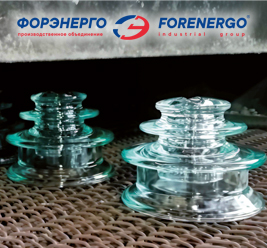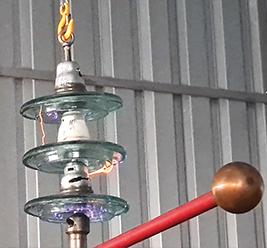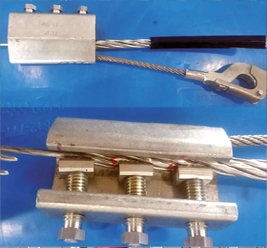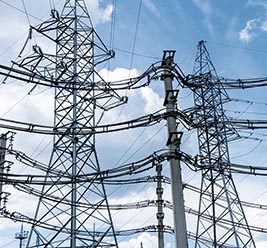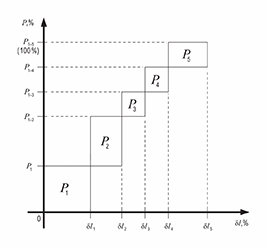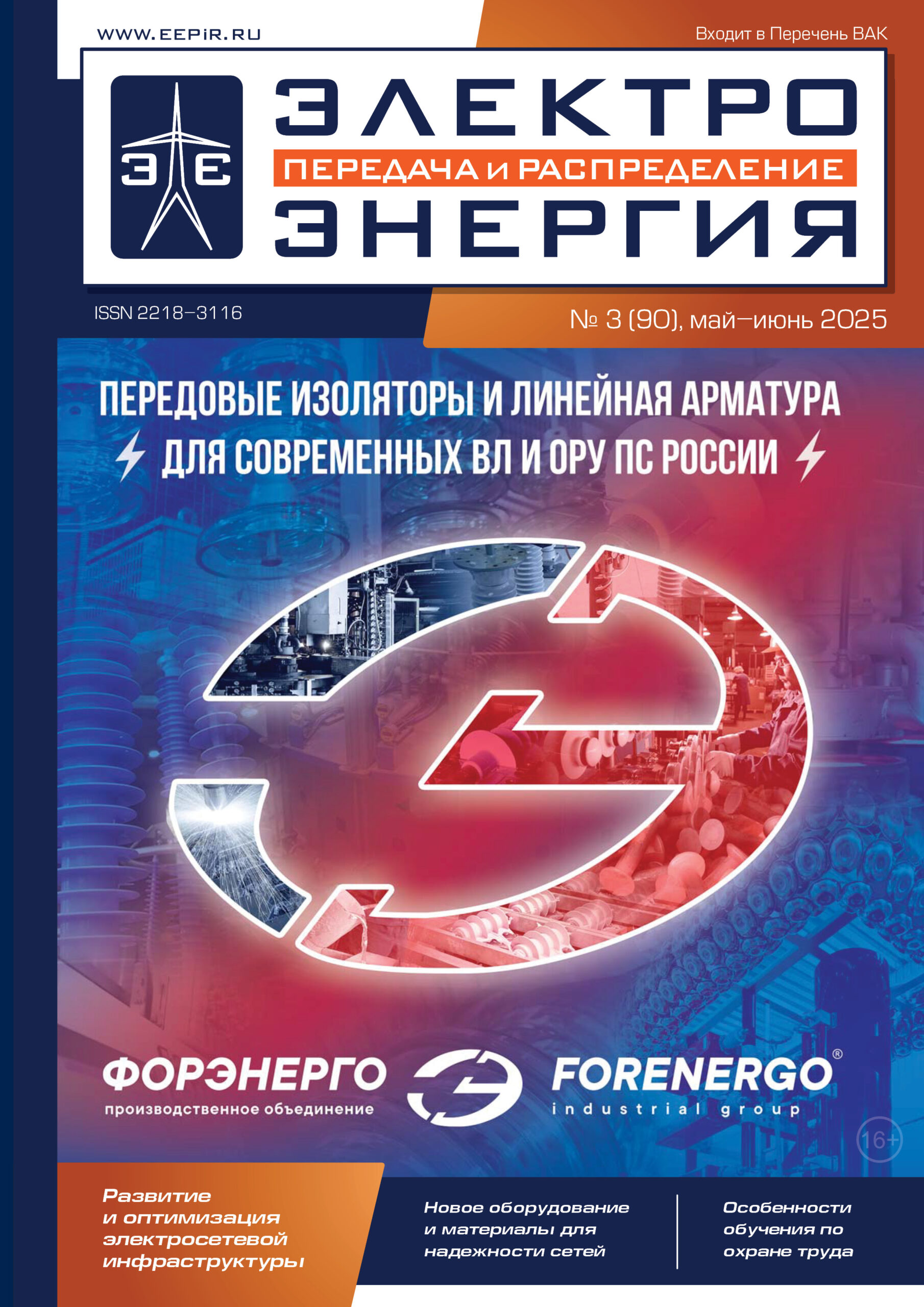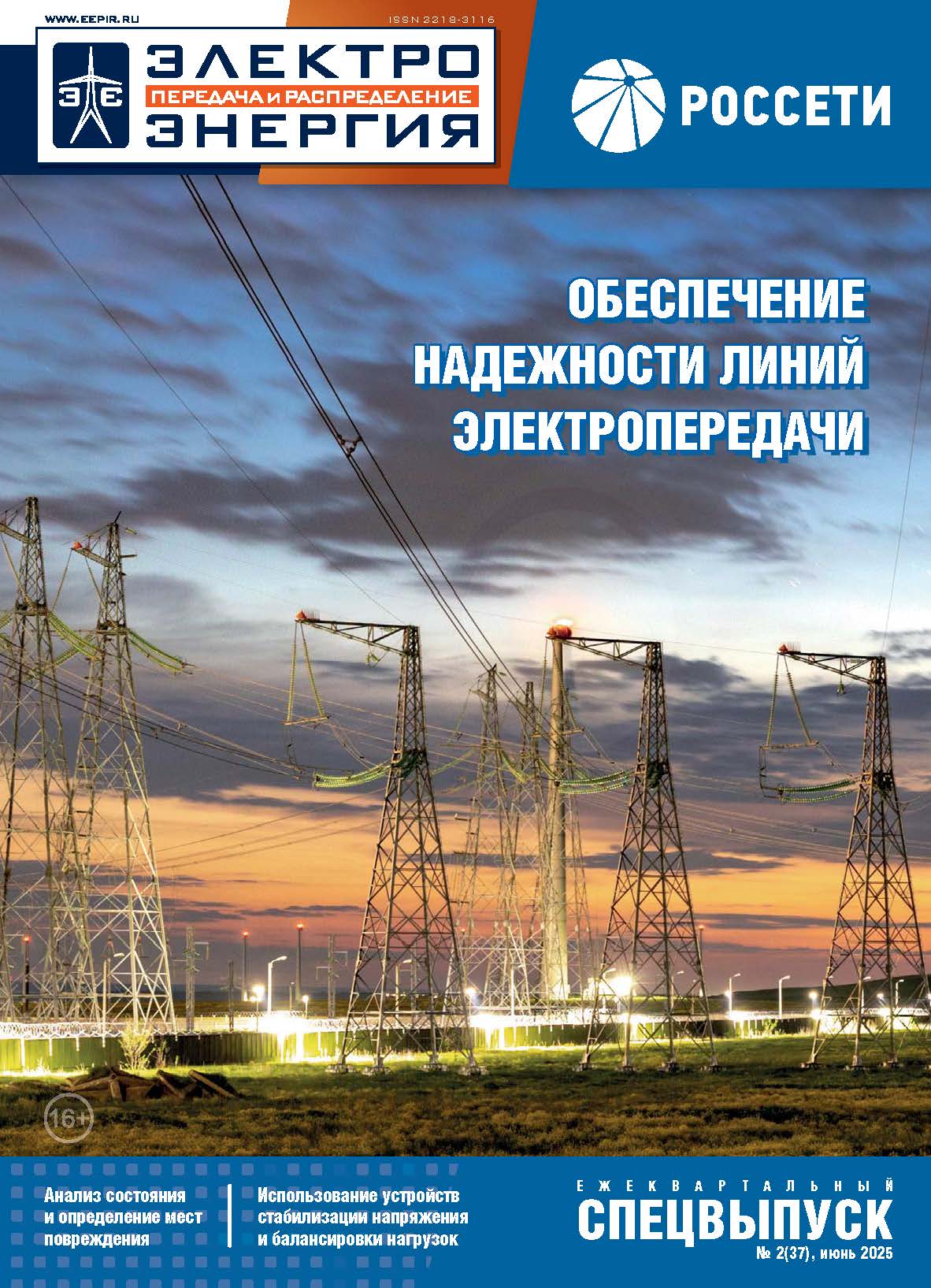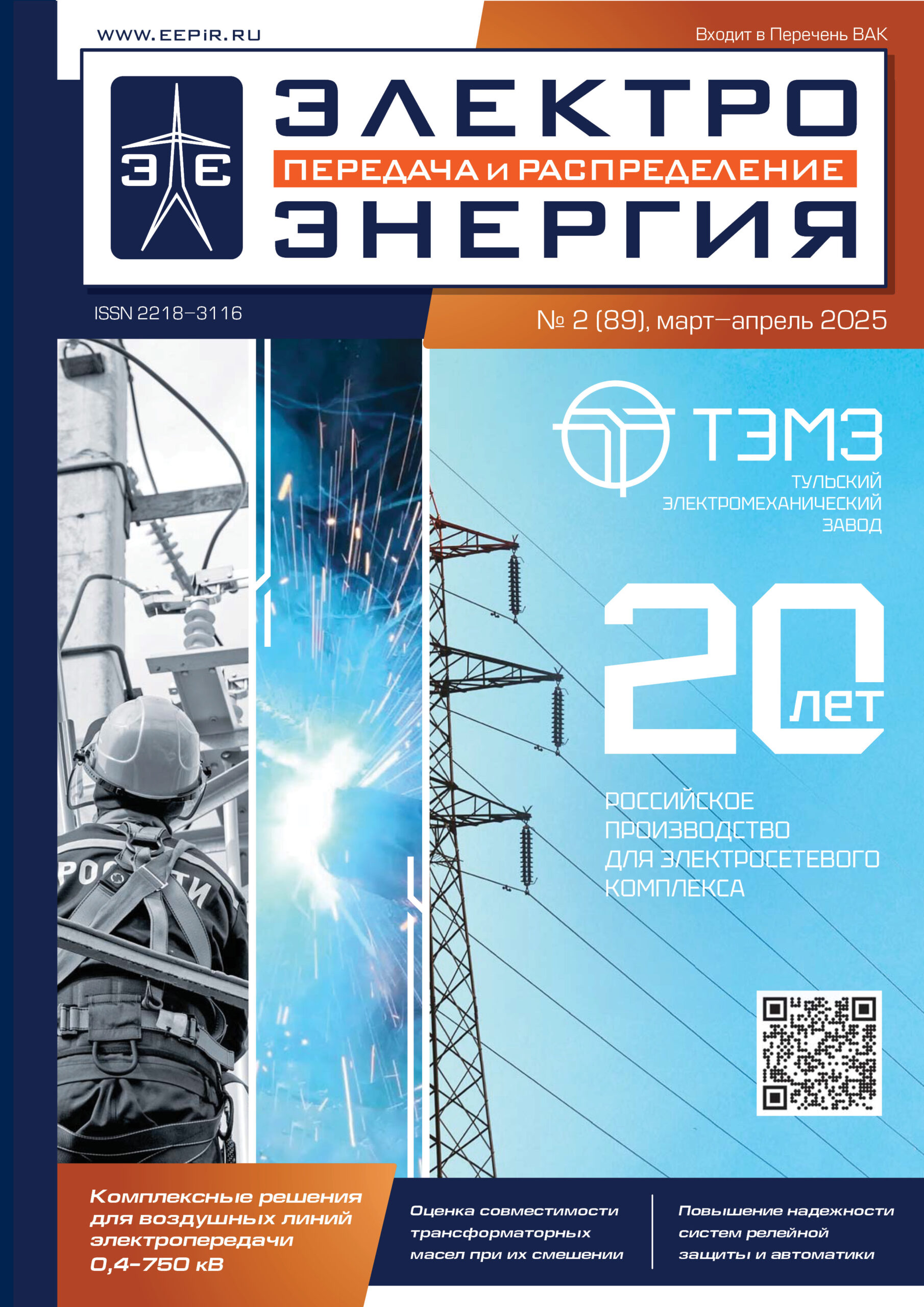
The MAIN JOURNAL for POWER GRID SPECIALISTS in RUSSIA
3 - 6 J U N E 2 0 1 9
MADRID, SPAIN

22
INN
OVAT
I
O
N
S A
N
D
EFF
I
C
I
E
N
CY PROPOSALS
Developing an Eff ective and Reliable
Power Grid in the Arctic Region Using
Rosseti Tyumen Innovative Solutions
The paper considers decisions on developing an effective and reliable power grid in the Arctic
region of the Russian Federation using the solutions of Rosseti Tyumen. These solutions are
needed for creating up-to-date Arctic electrical network using the positive results of research
and development implementation and taking into account existing climatic conditions.
Igor BOGACH,
Head of the Electrotechnical Service of the Maintenance and Repair Department of Rosseti Tyumen
Andrey BUROV,
Head of the Relay Protection and Automation Service of the Grid Control Center of Rosseti Tyumen
Konstantin ZHURAVLEV,
Leading Engineer in the Innovation and Energy Effi ciency Division, Development and
Innovation Department, Rosseti Tyumen
R
osseti Tyumen s a part of the Rosseti Group of
Companies and one of the largest interregion-
al distribution grid companies in Russia. It has
experience of operating the largest and most
extensive distribution grid infrastructure in the Yamalo-
Nenets Autonomous district (part of the Arctic zone of
the Russian Federation) since 1980.
Rosseti Tyumen service area is more than 1.4 mil-
lion square kilometers. It includes the Yamalo-Nenets
Autonomous district, the Khanty-Mansiysk Autonomous
district — Yugra and the Tyumen Region. The population
of the territory is about 3.6 million people. The length
of power lines is 51 107 km (including 0.4/10 kV —
23 444 km, 35 kV — 1 425 km, 110 kV — 24 382 km,
220 kV — 1 172 km), the number of 35-220 kV sub-
stations is 647 units (including 35 kV substations —
52 units, 110 kV substations — 586 units, 220 kV sub-
stations — 9 units).
The Decree of the President of the Russian Federa-
tion No. 296 of May 2, 2014 [1] defi nes Arctic zone ter-
ritories of the Russian Federation. The total area of the
Arctic zone is about 3 million sq. km (18% of the total
territory of the Russian Federation), including 2.2 million
sq. km of land with a population of 2.5 million people.
Arctic minerals, their explored reserves and estimated
resources make up the bulk of Russian mineral resource
base (more than 90% of nickel and cobalt, 60% of cop-
per, about 80% of gas and 60% of oil, as well as most of
Russian diamonds are mined here). Therewith, the po-
tential resources of these raw materials make up more
than 70–90% of the total in Russia.
The Arctic zone of the Russian Federation is charac-
terized by extreme climatic conditions, low development
(low density of population and industrial facilities) and
high resource intensity.
The main characteristics of the Yamalo-Nenets Au-
tonomous district:
• total area — 769 thousand sq. km (35% of the total
Arctic area);
• population — 547 thousand people (22% of the total
Arctic population);
• power generation — 10 billion kWh/year;
• the main electricity supplier is Rosseti Tyumen.
According to the Socio-Economic Development
Strategy of the Yamalo-Nenets Autonomous district (un-
til 2020) [2], the sustainable development of the regional
economics will be ensured primarily through the imple-
mentation of major investment projects related to the oil
and gas production and processing. These projects are
combined with the largest investment projects within the
Program for the integrated development of the autono-
mous district fi elds:
1. Development of Yamal Peninsula land fi elds by al-
locating three industrial zones:
• the fi rst group (Bovanenkovskaya) includes three
basic fi elds (Bovanenkovskoye, Kharasaveys-
koye, Kruzenshternskoye) with the gross gas pro-
duction of 217 billion m3 per year;
• the second group (Tambeyskaya) includes six
fi elds
(Yuzhno-Tambeyskoye,
Severo-Tam-
beyskoye, Zapadno-Tambeyskoye, Tasyiskoye,
Malyginskoye, Syadorskoye) and produce about
65 billion m3 of gas in total per year;
• the third group (Yuzhnaya) includes nine fi elds
(Novo-Portovskoye, Nurminskoye, Malo-Yamal-
skoye, Rostovtsevskoye, Arcticheskoye, Sredne-
Yamalskoye, Khambateyskoye, Neitinskoye, Ka-
mennomysskoye) and is considered as a priority
oil production facility with an annual production
level of 7 million tons. The gas potential of this
group does not exceed 30 billion m3 per year.
2. The Yamal LNG project, including the project of
Sabetta seaport construction. The seaport will
handle and transport goods along the Northern Sea
Route.
3. The Arctic Energy project, implementing the North-
ern Latitudinal Railway project. It will provide the
Yamal Peninsula with a single railway network, con-
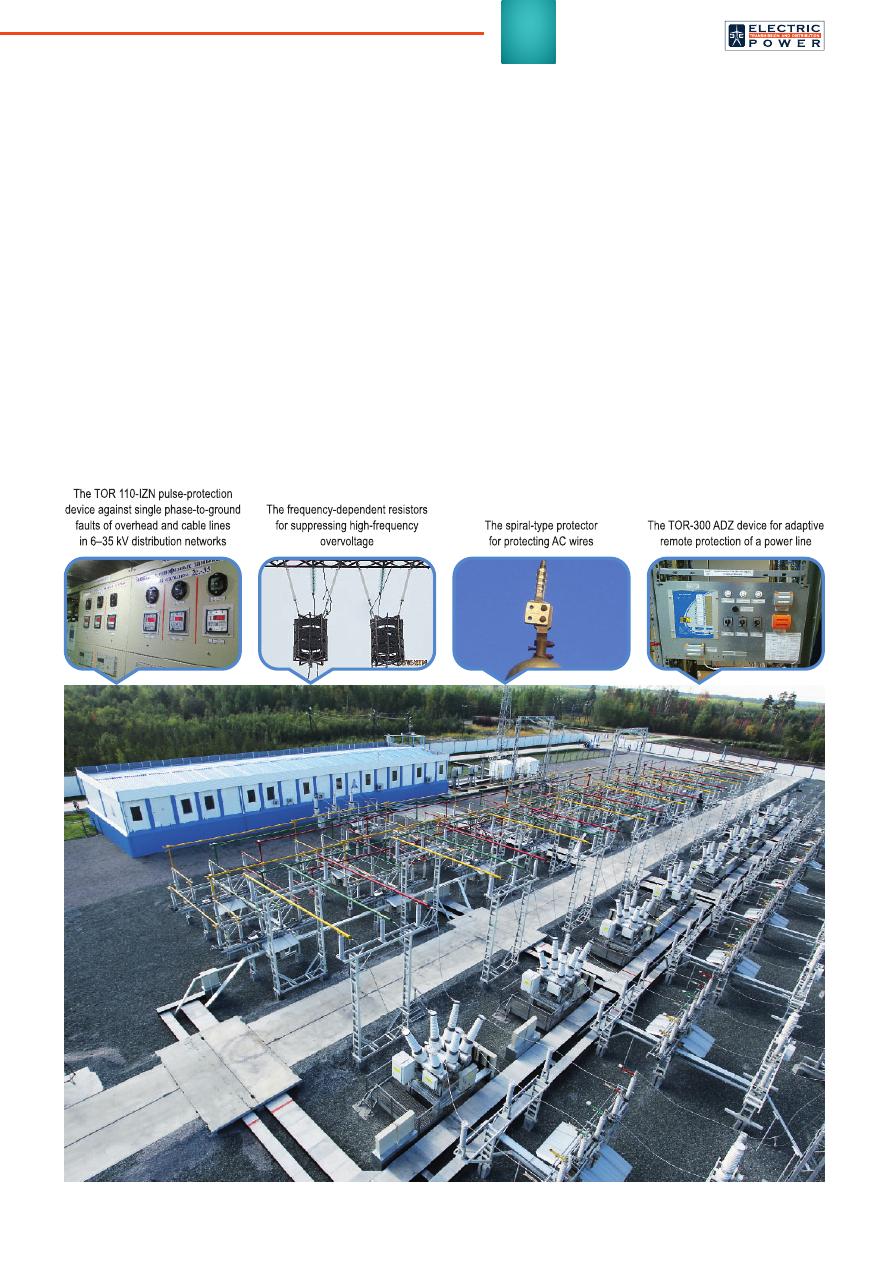
23
necting the Northern and Sverdlovsk railways. The
Obskaya — Salekhard — Nadym — Korotchaevo
polar trunk railroad will open access to the Northern
Sea Route and the Arctic shelves and increase the
transport security of the Russian Federation.
As soon as full-scale upstream and transportation of
raw hydrocarbons start, the total load of these industrial
zones will be at least 500-600 MW. In order to ensure
power supply of the industrial zones, it is necessary to
build a full-fl edged power grid infrastructure and genera-
tion facilities.
A well-developed energy infrastructure is not only
high reliability but also an impetus to develop other types
of industry in the region, which directly aff ects the socio-
economic development and national security of Russia.
First of all, reliable and uninterrupted power supply
infrastructure conducive to the region development is
required for advancing the industry and developing the
Arctic region of the Russian Federation.
To solve this problem, taking into account experience
of operating electric networks in the Far North and the
Arctic accumulated for 38 years, Rosseti Tyumen imple-
mented a number of works aimed at creating an eff ective
and reliable power grid in the Arctic region of the Russian
Federation. It should be noted, that innovative solutions
of research and development activities and fi eld tests
carried out in the Arctic zone of the Russian Federation
(Yamalo-Nenets Autonomous district) were used.
The construction, reconstruction and operation of
electric networks served by Rosseti Tyumen in the Arc-
tic region (Yamalo-Nenets Autonomous district) under
diffi cult geological, climatic and geocryological condi-
tions allowed engineers to identify a number of climatic
factors aff ecting electric networks:
• during thunderstorms there is no rapid draining of
thunderstorm pulse energy from the ground loop
of the transmission tower to the ground due to the
high resistivity of soils (more than 1,000 Ohm·m). It
causes the backfl ashover of the power line and its
following outage;
• cryogenic destruction of piles (“frost weathering”),
destruction of the towers foundations when the out-
24th World Energy Congress
Special issue, September 2019

24
side temperature passes through zero, air hoar for-
mation on the wires might occur during icy-hoar frost
impacts;
• wind eff ects and wires swinging lead to numerous
cases of damage to wires and ground wires in sup-
porting clamps due to vibration, when operating
overhead lines passing through open areas;
• frosty heaving leads to the loss of tower foundation
bearing capacity, damage to the structural elements
of the tower and its foundation, and fall of transmis-
sion tower in case of failure to take measures.
Developing an eff ective and reliable up-to-date pow-
er grid in the Arctic region of the Russian Federation
involves the use of technological (methodological) and
technical developments obtained from the research and
development work.
To solve the problem of creating reliable innovative
electric networks in the Arctic zone based on the innova-
tive development program of Rosseti Tyumen together
with the ENERGOSETPROEKT Institute, the Require-
ments (Standard) were developed for designing the
construction, reconstruction and technical re-equipment
of 35-220 kV power lines in the north of West Siberia.
Existing climatic, geotechnical and geocryological con-
ditions of the region and technical solutions (Catalogs)
on modernization of 35-110 kV steel lattice towers and
their foundations applied in the northern regions of
Western Siberia (Yamalo-Nenets Autonomous district)
and recommended for the Arctic zone were taken into
account.
The requirements are developed based on system-
atization of experience in the construction, reconstruc-
tion and operation of 35-110 kV power lines in the Far
North, on the basis of new regulatory documents. The
design features of the towers and foundations of 35-
220 kV power lines in the northern air-climate zone,
analysis of the causes of accidents on power lines, the
effi ciency of remedial measures and contain compre-
hensive descriptions on calculating the mechanical part
of overhead power lines were taken into account. Atten-
tion is focused on the selection of permissible voltages
in wires and cables during designing in the conditions of
the north of Western Siberia (Yamalo-Nenets Autono-
mous district). The calculations of insulators and line
hardware, the features of arranging the towers along the
overhead line, the calculations of towers and founda-
tions at low temperatures are considered. Approaches
to designing the construction of overhead lines, as well
as requirements for engineering surveys and design
decisions based on the systematization of experience
in the construction, reconstruction and operation of 35-
110 kV overhead lines are updated.
The requirements were submitted for approval to var-
ious expert organizations, positive assessments were
received from third-party organizations and branches of
Rosseti Tyumen operating electric networks in the Arctic
zone (Yamalo-Nenets Autonomous district):
– JSC Firm ORGRES;
– Institute of Hydraulic Engineering and Power Plant
Construction of Moscow State University of Civil
Engineering;
– Self-regulating organization of non-profi t partnership
"UNION OF ENERGY BUILDERS";
– Branch of Rosseti Tyumen, Noyabrsk Electric Net-
works;
– Branch of Rosseti Tyumen, Northern Electric Net-
works.
It is recommended to construct reliable innovative
electric networks in the Arctic region using develop-
ments implemented as part of the Rosseti Tyumen
innovative development program described in this
paper.
Within the innovative development program of Ros-
seti Tyumen, together with Rosseti FGC UES, research
work devoted to development of measures to reduce the
accident rate on the overhead lines of Rosseti Tyumen
under complex geotechnical, climatic and geocryologi-
cal conditions was carried out.
As a part of the research, an analysis of accidents on
existing 35, 110, 220 kV overhead lines of the branches
of Rosseti Tyumen located in the Yamalo-Nenets Au-
tonomous district (the Arctic zone of the Russian Fed-
eration) was performed in reliance on climatic and other
infl uences, such as thunderstorms, icy-hoarfrost, wind
and other eff ects, wires swinging, aging, deterioration,
defects in construction and installation, defects in de-
sign and manufacture, fi res, frosty heaving. According
to performed analysis, the greatest number of 35, 110,
220 kV overhead lines outages is associated with cli-
matic infl uences — lightning overvoltage, icy-hoarfrost
and wind eff ects. Analysis of lightning outages of 35-
220 kV overhead lines of Rosseti Tyumen allowed to
identify overhead lines with low lightning resistance.
Analysis of frosty heaving of the towers foundations re-
vealed the power lines exposed to this factor.
To solve the problems arising from the operation of
electric networks in the Arctic zone of the Russian Fed-
eration, taking into account the climatic factors, Ros-
seti Tyumen uses innovative solutions obtained from
research and development:
1. Open X-section piles developed jointly with the
ENERGO SETPROEKT Institute within the research
work “Development of a technical project including
a calculation methodology and design documenta-
tion for unifi ed towers foundations based on open
X-section metal piles for the construction and recon-
struction of 35-220 kV overhead lines” and imple-
mentation of design work on “Production, testing and
certifi cation of prototypes of unifi ed towers founda-
tions for 35-220 kV overhead lines based on open
X-section metal piles". Piles of an open X-sectional
profi le have undoubted superiority compared to con-
ventional reinforced concrete piles in bearing capac-
ity for pulling loads and resistance to the eff ects of
frost heaving.
2. A frequency-dependent resistor for suppressing
high-frequency overvoltage, developed jointly with
the Novosibirsk State Technical University within the
research. The scope of the frequency-dependent
resistor is the protection of high-voltage electrical
equipment from the eff ects of high-frequency over-
voltage initiated by lightning damages of overhead
INN
OVAT
I
O
N
S A
N
D
EFF
I
C
I
E
N
CY PROPOSALS
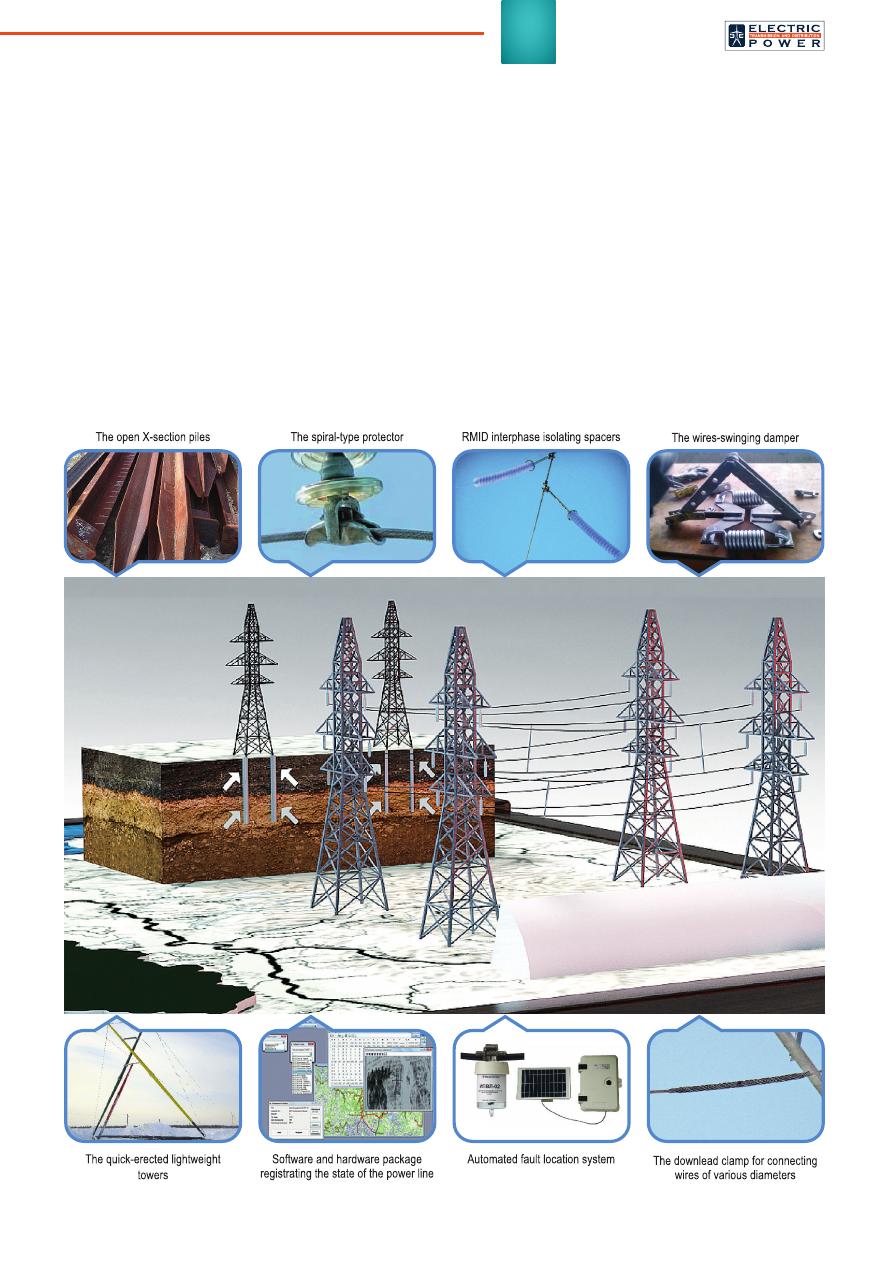
25
lines close to the substation. In particular, frequen-
cy-dependent resistors can be successfully used to
protect the coil insulation of power transformers, as
well as cable inserts (based on cables with cross-
linked polyethylene insulation) from RF overvoltage
initiated by lightning damages of overhead lines
close to the substation. The use of frequency-depen-
dent resistors will be important in areas with a large
number of thunderstorms to protect expensive
equipment.
3. A wires-swinging damper, developed jointly with Ele-
ktroset R&D Center within the development work, is
a device built into anchor string (mounted between
the tower arm and the insulator string), which damps
out the wires swinging in the initial stage or reduces
wire vibrations to a safe level.
4. The spiral-type protector for protecting AC wires
when exiting the hardware clamps, developed jointly
with Elektroset R&D Center within the development
work, is designed to protect against damage of stubs
when the wire exits the hardware clamp.
5. A broadband vibration damper, developed jointly with
Elektroset R&D Center within the development work,
can reduce the vibration level of wires/ground wires
to a safe level.
6. Quick-erected lightweight towers for remedial opera-
tions on 35-110 kV overhead lines made from compos-
ite materials that do not require special foundations,
developed jointly with PHOENIX-88 CJSC within the
development work, have the following properties:
• quick installation by one team (at least 10 people)
using special lightweight mounting facilities and
one unit of all-terrain equipment using a traction
mechanism with a force of 2 t;
• no need to build foundations requiring a signifi -
cant amount of earthworks;
24th World Energy Congress
Special issue, September 2019

26
• fast delivery of the tower assembly set to remote
areas, including by helicopter;
• multiple use of towers;
• tower reliability, taking into account its possible
operation in diffi cult conditions, including at low
temperatures;
• the towers design provides quick, enlarged as-
sembly and putting into operational position;
• towers are suitable for installation, including in
soft soils;
• the towers have the lowest possible mass while
maintaining suffi cient reserves of mechanical
strength, taking into account the loads character-
istic for the maximum cross-sections of the wires
(specifi ed in the technical requirements), and cli-
matic factors.
7. A spiral downlead clamp for connecting AC wires of
various diameters, developed jointly with Elektroset
R&D Center within the development work, is de-
signed to connect AC wires (AC 70/11-AC240/56) of
various diameters in a stub to create a reliable stub
connection.
8. The TOR 110-IZN pulse-protection device against
single phase-to-ground faults of overhead and cable
lines in 6-35 kV distribution networks, developed
jointly with Relematika LLC (formerly IC Bresler LLC)
and ENIN OJSC as a result of research and develop-
ment work. The uniqueness of the proposed device
lies in the absence of settings for the relay protection
set, since its principle of operation is based on the
response to a transient process at a single phase-to-
ground fault with the control of wave propagation ac-
cording to the sign of instantaneous power. The TOR
IZN-01 device is designed for selective signaling or
tripping during ground faults (stable and unstable) in
overhead and cable lines in 6-35 kV networks, re-
gardless of the neutral operating mode.
9. The device for adaptive remote protection of a power
line, developed jointly with Relematika LLC within the
research and development work. The main advan-
tages of the developed device are its high sensitivity
to transient resistances and response to all types of
damage in the protected zone adapting the response
characteristics to the parameters of the pre-fault net-
work mode. The device will allow avoiding additional
calculations of the protection operation parameters
when changing network modes and confi guration.
ECONOMIC EFFICIENCY OF DECISIONS
OBTAINED BY RESEARCH AND
DEVELOPMENT IMPLEMENTATION
The application of the developed technical solutions and
regulatory and technical requirements obtained as part
of the implemented innovative development program of
Rosseti Tyumen will lead to a cost improvement of 20.79
million rubles per year per 100 km of overhead lines,
when developing electric networks in the Arctic zone of
the Russian Federation.
To create electric networks in the Arctic zone of the
Russian Federation (Yamalo-Nenets Autonomous dis-
trict), at least 2,000 kilometers of overhead lines should
be constructed. Therefore, the economic eff ect of ap-
plying this project for the newly built power grid in the
Arctic zone of the Russian Federation (in the territory of
the Yamalo-Nenets Autonomous district) will amount to
415.721 million rubles per year.
PROTECTABILITY, IMPORT SUBSTITUTION
Innovative solutions of Rosseti Tyumen are protected by
the property right on inventions and utility models and by
the company trademark. All prototypes of products ob-
tained within research and development are produced
(part of the development is planned for production) and
sold (part of the development is planned for sale) in the
Russian Federation:
1. Patent for the invention “Pulse-protection device
against single phase-to-ground faults of overhead
and cable lines in 6-35 kV distribution networks” No.
2480882 of April 27, 2013. Patent holders: Rosseti
Tyumen, IC Bresler LLC (Relematika LLC), ENIN
OJSC.
2. Patent for the utility model “Device for suppressing
high-frequency overvoltage” No. 132633 of Septem-
ber 20, 2013. Patent holders: Rosseti Tyumen and
Novosibirsk State Technical University.
3. Patent for the utility model "STEP-BOLT" No. 164823
of August 30, 2016. Patent holders: Rosseti Tyumen
and PHOENIX-88 CJSC.
4. Patent for the utility model “Complete combined pro-
tection device on alternating operating current for
connecting the switchgear of 6-35 kV electric net-
works” No. 157512 of November 11, 2015. Patent
holders: Rosseti Tyumen, IC Bresler LLC (Relema-
tika LLC).
5. Patent for the utility model “The device for adaptive
remote protection of a power line” No. 166909 of No-
vember 25, 2016. Patent holders: Rosseti Tyumen
and IC Bresler LLC (Relematika LLC).
6. Patent for the invention “Quick-erected lightweight
tower for remedial operations on overhead lines” No.
2614180 of March 23, 2017. Patent holders: Rosseti
Tyumen and PHOENIX-88 CJSC.
7. Patent for the invention “Method for remote protec-
tion of power lines” No. 2622895 of June 21, 2017.
Patent holders: Rosseti Tyumen and IC Bresler LLC
(Relematika LLC).
The domestic developments and technologies are
being adopted when implementing the project.
INN
OVAT
I
O
N
S A
N
D
EFF
I
C
I
E
N
CY PROPOSALS
REFERENCES
1. Decree of the President of the Russian Federation No. 296 of May 2, 2014, the offi cial website of the President of the Russian
Federation. URL: http://www.kremlin.ru/acts/bank/38377.
2. On the strategy for socio-economic development of the Yamalo-Nenets Autonomous Okrug until 2020 (as revised on: De-
cember 15, 2016), an electronic fund of legal and regulatory and technical documentation. URL: http://docs.cntd.ru/docu-
ment/424064239.
Оригинал статьи: Developing an Effective and Reliable Power Grid in the Arctic Region Using Rosseti Tyumen Innovative Solutions
The paper considers decisions on developing an effective and reliable power grid in the Arctic region of the Russian Federation using the solutions of Rosseti Tyumen. These solutions are needed for creating up-to-date Arctic electrical network using the positive results of research and development implementation and taking into account existing climatic conditions.




